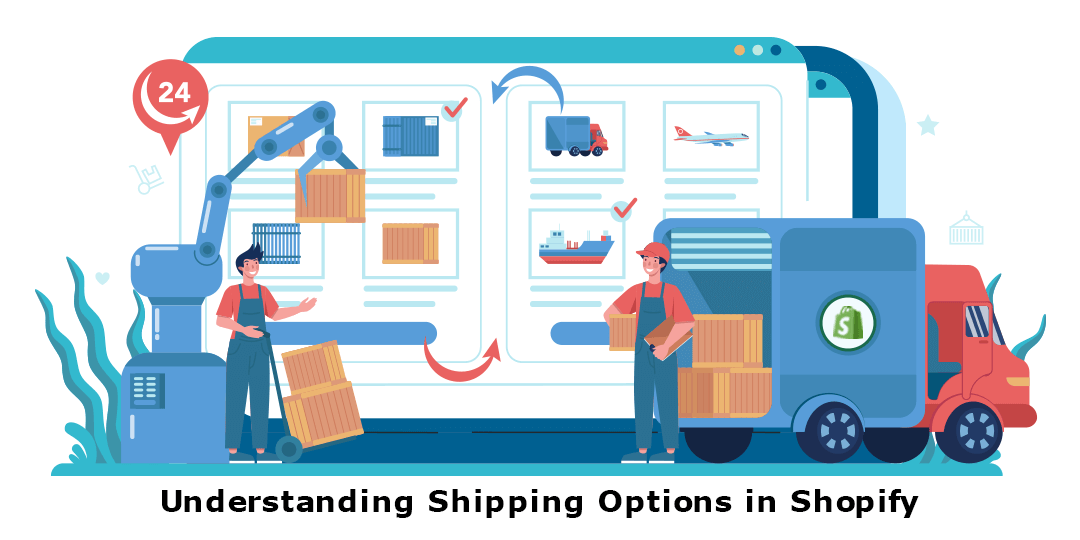For e-commerce entrepreneurs using Shopify as their platform, one of the critical aspects of running a successful online store is providing a seamless and efficient shipping experience to customers. Understanding the various shipping options available in Shopify is essential to tailor your shipping strategy to meet customer expectations while optimizing costs and delivery times.
In this blog post, we’ll delve into the different shipping options Shopify offers, helping you make informed decisions to enhance your online store’s shipping process.
Shipping Options in Shopify
Manual Shipping Rates
Manual shipping rates grant you full control over how you charge customers for shipping. By creating shipping zones and specifying rates based on factors such as weight, price, or quantity, you can set up straightforward shipping policies. This option works well for store owners who prefer a more hands-on approach to managing shipping costs.
Carrier Calculated Shipping
With carrier-calculated shipping, you can integrate your Shopify store with various shipping carriers such as UPS, FedEx, DHL, and USPS. This option provides real-time shipping rates based on the customer’s location and the dimensions and weight of the items in their cart. Embracing this option ensures accurate shipping costs, which helps build customer trust and avoids overcharging or undercharging for shipping.
Free Shipping
Offering free shipping is a powerful marketing tool that can boost conversion rates and encourage larger order values. You can set up free shipping for specific products, all products, or based on a minimum order value. While this option can increase customer satisfaction and loyalty, it’s essential to consider how to absorb shipping costs without negatively impacting your profitability.
Flat Rate Shipping
Simplify the checkout process by implementing flat rate shipping, where customers are charged the same fixed shipping fee, regardless of their location or the items they purchase. This option is straightforward for customers to understand, but it may not always reflect accurate shipping costs, especially for international orders or significantly varying product weights.
Weight-Based Shipping
Ideal for businesses with products of different weights, weight-based shipping calculates shipping rates based on the total weight of items in the customer’s cart. By setting up different weight ranges and corresponding shipping fees, you can ensure fair shipping charges for various orders.
Price-Based Shipping
Similar to weight-based shipping, price-based shipping sets shipping rates based on the total order value. This approach allows you to reward customers with lower shipping costs for larger purchases or offer free shipping for orders that exceed a specific amount. It can serve as a compelling incentive to increase average order values.
Local Delivery and Pickup
To cater to local customers and create a more personalized experience, Shopify enables you to offer local delivery or in-store pickup options. Setting specific delivery areas and time frames can enhance customer convenience and reduce shipping costs for both parties.
Conclusion
Selecting the right shipping options in Shopify is crucial for providing an exceptional customer experience while optimizing your business’s efficiency and profitability. Consider factors like product weight, shipping destinations, delivery times, and your profit margins while setting up your shipping options to ensure a positive shopping experience for your customers while maintaining a healthy business.
Related Articles –
- How To Set up Shipping and Delivery On Shopify?
- How to Set Up Custom Shipping Rates in Shopify Store?
- How to Buy a Shipping Label on Shopify?
By understanding the diverse shipping choices available, you can tailor your strategy to meet the unique needs of your customers and streamline your shipping process. Whether you prefer to handle shipping manually, integrate real-time carrier rates, or offer free or flat-rate shipping, Shopify Experts empowers you to build a successful and customer-centric online store.








